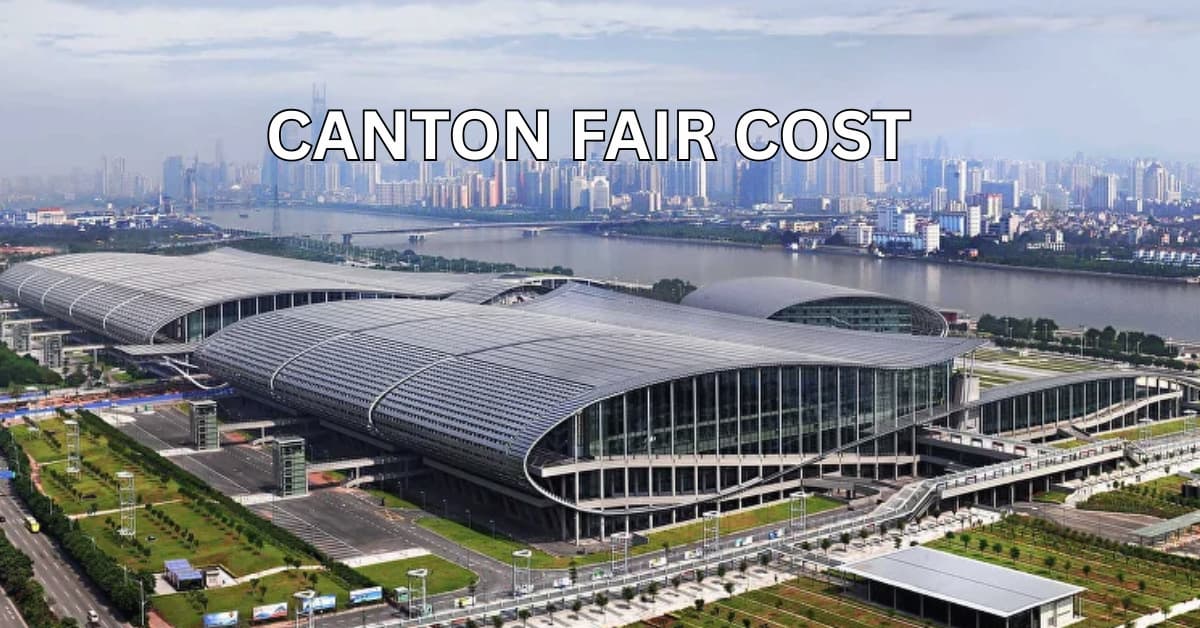As the person overseeing procurement in your business, you're faced with numerous responsibilities. You have to manage the business needs, the suppliers, the paperwork, the stakeholders involved in the procurement process, and more.
Without a proper strategy to manage all these aspects, they can appear chaotic and negatively impact your organization's productivity.
We have had many businesses reach out to our procurement experts with issues like this, and this article covers how we help them manage their company’s procurement.
What is Procurement Management?
Procurement management encompasses activities an organization engages in to ensure it acquires the right products or services from the right sources at the right time and at the right cost.
Proper procurement management activities aim to optimize the company’s resources, control costs, and manage procurement risks while upholding quality standards across the supply chain.
Achieving a seamless and error-free procurement process is very much possible when you have the right elements in place to manage the process.
But before delving into these 6 elements, let's consider their potential impact on your business.
Benefits Of Managing Your Procurement With SARA
At SARA, we help businesses manage their procurement process, and here are the outcomes of implementing the 6 elements of procurement management we use:
1. Quality Assurance:
Consistent procurement of quality raw materials, services, and tools is essential for delivering optimal value to customers. This can be achieved when the process of procuring these goods and services is well-managed.
A well-managed procurement process includes having well-defined contract terms and costs and managing a strong relationship with suppliers. This assures consistent quality when procuring from these suppliers. Further details on achieving this are discussed later in the article.
2. Resources Efficiency:
Effective management and optimization of your procurement process make achieving cost and time savings easy.
All you have to do is:
- Streamline your resource utilization,
- Prevent overstocking and underutilization of resources,
- Optimize inventory levels,
- Negotiate favorable terms with suppliers,
- Optimized logistics and so on.
All these procurement management activities can help you prevent budget overruns, achieve operational excellence, and promote long-term success.
3. Seamless Functioning:
Aside from having a procurement management plan, which is a major element of managing your procurement, there are other elements that can help you operate smoothly and harmoniously in the execution of the plan, from sourcing to delivery.
Businesses experience bottlenecks in their procurement process due to the following:
- Ineffective supplier management,
- Poor communication,
- Poor collaboration,
- Lack of automation,
- Inconsistent processes, and so on.
We help our clients solve all these by implementing the same procurement management strategies we discuss later in this article.
4. Compliance and Ethics:
Every procurement process has legal regulations to comply with, industry standards to meet, contracts and agreements to fulfill, and ethical practices to work by.
It is easy to miss any of these things if they are not managed well, and this can affect your business's reputation and trust.
With the procurement management audit and monitoring that we implement for our clients, they are able to ensure compliance with all procurement laws, contract regulations, tax requirements, and import/export regulations. Your business can achieve this as well.
5. Risk Mitigation:
Procurement is only risky when not managed well. Managing your procurement process also involves identifying, assessing, and controlling risks.
These risks could range from:
- Supplier reliability,
- Quality risks,
- Market fluctuations,
- Supply chain risks,
- Contractual risks,
- Compliance risks,
- Financial risks,
- Operational risks, and more.
Our clients always express confidence due to our years of experience in mitigating risk to the barest minimum. We discuss how we achieve this in detail later in this article.
6. Reducing Errors:
An important element of procurement management is the implementation of automation with technological tools, which eliminates the occurrence of human error in the procurement lifecycle.
How costly an error in procurement can be is evident, but you get to prevent it by utilizing technology solutions, conducting audits of your procurement process, and implementing robust procurement policies and plans.
7. Minimizing Delays:
Depending on your business structure and the nature and location of the commodity to be procured, the procurement process might take days, weeks, or months.
However, some procurement activities take longer than they should due to poor management.
- Should your procurement and budget approval process take as long as it does now?
- Should the logistics of imported or exported goods take that long?
- Should you spend that much time on compliance with procurement regulations and obtain necessary permits or approvals?
- Should you experience delays from your suppliers?...
Many of these delays can be avoided with a procurement management strategy.
6 Elements of a Successful Procurement Management Strategy
In managing the procurement of business, we follow an efficient strategy that comprises 6 key elements. We have discussed each of these elements in detail below so you can implement them in your business. If you need any help in doing this, reach out to us.
1. Procurement Management Plan:
This is a foundational element of procurement management. It is the first thing you need to develop when a procurement need is identified in your business.
A procurement management plan is more like a process roadmap showing your procurement lifecycle, from the identification of the needs to the delivery of the goods or services. It outlines the approach, processes, roles, responsibilities, and critical activities in procurement operations.
A detailed procurement plan is crucial for effective procurement management as it guides you and everyone involved through the process.
How To Create A Procurement Management Plan.
Creating a procurement plan shouldn't be complicated but rather straightforward; you only need to identify what needs to be in the plan and document it in one place.
To allow for easy collaboration between you, your team, and your procurement partners, it is best you use procurement management software to record this plan.
What Should Be Included In A Procurement Management Plan?
A. Your Procurement Objective:
What goods or services do you want to procure? This should be clearly described in your procurement plan, outlining the specifications and so on.
B. Your Procurement Method and Process:
How do you want to procure this commodity? Add it to your procurement plan.
C. Your stakeholders, team members, and their responsibilities:
Who does what in the procurement life cycle? You need to have this well spelled out in the procurement plans with timelines so stakeholders know when they have to come in, and the team members know when they have to do their part.
D. Risk Assessment and Mitigation:
What are the possible risks you might face? How likely are they to happen? And how can you avoid them? Put this in your plan.
E. Legal Regulations:
Are there legal laws and regulations guiding the procurement of this commodity? Is there an industry standard that must be met? All these also need to be in the procurement plan to ensure compliance.
F. Budget and Cost Control:
Define your budgetary considerations and allocation. Also, have an estimate of the procurement cost and some cost-saving strategies in your plan.
“Note: Having a good procurement plan is great, but you need to ensure effective execution of the plan. Some of the other elements can help you in achieving this, but you can also outsource the execution to a procurement agency.”
2. Procurement Performance Monitoring:
Post-development of the procurement roadmap, an important management activity you need to engage in is performance monitoring during execution. This is one way to ensure that the procurement plan is well executed.
Track, evaluate, and analyze procurement processes and outcomes to assess your performance, identify improvements, and optimize continuously.
Set up a means to monitor what is going on during your procurement process.
How To Monitor Procurement Performance.
A. Define Key Performance Indicators (KPIs):
The first step in implementing this element is identifying what you want to monitor and the indicators aligning with them.
Not sure what to monitor? Here are relevant procurement areas and corresponding KPIs you can start with:
- Process Efficiency KPIs: Contract Compliance Rate, Purchase Order Cycle Time, Invoice Accuracy Rate…
- Cost KPIs: Cost savings, Purchase price variance, total cost of procurement…
- Supplier Performance KPIs: On-time delivery rate, Quality defect rate, Supplier performance scorecard…
B. Establish Baselines or Targets:
Now that you know what to monitor, the next step is to develop a baseline for each KPI you decide to monitor.
The best way to set these targets is to look at historical data, industry benchmarks, best practices, and your organizational goals.
C. Monitor Your KPIs:
This step involves implementing systems that allow you to easily monitor your chosen KPIs and see if they might be your targets.
You can decide to manually check up on every procurement activity from time to time or automate this using procurement management systems.
Once the metrics you monitor show that your procurement plan is not executed accurately, you can promptly rectify it and reach out to the right person to get the procurement process back on track.
3. Procurement Management Audit:
Another effective way to manage your business procurement life cycle is to schedule periodic audits of the process.
During this audit, the objective is to assess the procurement process and its results, to pinpoint areas for improvement, and to verify compliance with the procurement plans, contractual obligations, and legal requirements.
Procurement management audits are usually conducted quarterly, biannually, or annually, but you can also choose to conduct one when special needs arise.
How We Conduct Procurement Management Audit For Businesses
Procurement management audits are comprehensive analyses of your entire procurement process involving the following:
- Explain in detail how your procurement process has been.
- Outlining things that have gone wrong during procurement.
- Developing strategies to mitigate the recurrence of previous errors.
- Evaluating the efficiency of your procurement method.
- Discussing new best practices that can help improve your procurement process.
4. Procurement Automation:
The importance of leveraging technology in procurement management cannot be overlooked. Automating repetitive tasks in your procurement process saves time and allows for easy analyses and integrations using the software functionalities.
The reduction of manual activities in the procurement process also streamlines your workflow and reduces the occurrence of costly human error.
You can automate your procurement performance monitoring and other activities in your procurement process that do not necessarily require human intervention constantly.
How To Automate The Procurement Process.
There are 3 simple steps to this:
- Step 1: Evaluate your current procurement process.
- Step 2: Identify automation opportunities.
- Step 3: Select the procurement automation tool.
When selecting a procurement automation tool, it is best you pick one that can handle most of the automation opportunities you identified in step 2, if not all. This will aid in easier management of data and save the cost of purchasing multiple tools.
5. Risk Management Strategies:
In every procurement process, there is a chance that things don’t go as planned and affect other business activities. The purpose of this element in our procurement management strategy is to minimize such disruptions.
This is when you identify and assess possible risks in procurement (this goes into your procurement plan), monitor risks throughout the procurement lifecycle, and proactively address potential threats and uncertainties to safeguard your organization’s interests.
How To Mitigate Risk in Procurement.
- Increase the variety of suppliers to lessen reliance on a few main providers.
- Leverage the experience of a professional procurement agent.
- Conduct thorough performance reviews and research on suppliers.
- Draft strong contracts with precise terms, obligations, and dispute resolution procedures.
- Deploy business continuity and backup plans for supply chain interruptions.
- Define insurance coverage, indemnity, and risk-sharing arrangements.
- Monitor geopolitical events, economic indicators, and market trends for early risk identification.
- Put quality control and inspection procedures in place to reduce the risk of subpar goods and services.
- Conduct routine evaluations, audits, and assessments to find and fix compliance issues.
- Educate procurement teams on compliance regulations, ethical standards, and best practices for risk management.
- Strengthen cybersecurity defenses to fend off cyberattacks on private procurement data…
6. Supplier Relationship Management:
Another way to ensure an effective procurement process is to maintain a good relationship with your supplier or procurement agents.
It takes time and diligent effort to find good suppliers that align with your business needs; hence, building a long-term relationship with them makes sense, especially when the procured commodity is a regular need in your business.
How To Manage a Strong Supplier Relationship.
- Foster open and transparent communication channels with suppliers.
- Establish clear expectations, objectives, and performance standards with suppliers.
- Build trust with suppliers based on mutual respect, integrity, and reliability.
- Implement robust supplier performance management processes to monitor and evaluate supplier performance against agreed-upon metrics and standards.
- Engage in collaborative planning and forecasting activities with suppliers.
- Develop effective conflict resolution and issue management mechanisms.
- Proactively manage supplier-related risks…
Manage Your Procurement Process with SARA
For every business, procurement management is a continuous activity carried out as long as the business has the need for procurement.
Only with the right strategy can you effectively manage a procurement process that would run smoothly from start to finish. We have discussed the 6 elements of the strategy we use in managing business procurement and how you can implement each of them.
Do you need help in perfectly implementing the procurement management strategy discussed in this article?
Reach out to us with your procurement needs, and our experienced procurement agents will help manage the entire process of procuring what you need.






Comments
Please log in to leave a comment.